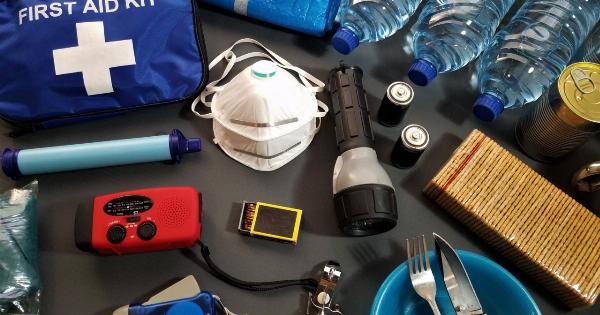Our waist circumference is a simple measurement that can provide valuable insights into our overall health. It is an important indicator of abdominal fat, which is associated with an increased risk of various health conditions.
By measuring our waist circumference regularly, we can monitor changes and take necessary steps to maintain or improve our health.
The Relationship Between Waist Circumference and Abdominal Fat
Waist circumference is a measurement taken at the narrowest point between the bottom of the ribcage and the top of the hip bones. It indicates the amount of abdominal fat that a person carries.
Abdominal fat, also known as visceral fat, is stored within the abdominal cavity and surrounds vital organs such as the liver, pancreas, and intestines.
Excess accumulation of abdominal fat can negatively impact our health. This type of fat is metabolically active and releases various chemicals and hormones that interfere with the normal functioning of our body.
High levels of abdominal fat have been linked to an increased risk of insulin resistance, type 2 diabetes, heart disease, stroke, certain cancers, and even premature death.
Waist Circumference Guidelines
Waist circumference cutoffs vary depending on gender, ethnicity, and population groups. However, for adults, a general guideline for increased health risks is a waist circumference above 40 inches (102 cm) for men and above 35 inches (88 cm) for women.
These cutoffs indicate a higher likelihood of developing obesity-related health conditions.
It is important to note that waist circumference should not be used as a standalone diagnostic tool.
It is meant to be used in conjunction with other measurements and assessments to get a comprehensive understanding of an individual’s health status.
How to Measure Waist Circumference
Measuring waist circumference is a simple process that can be done at home with the help of a measuring tape. Follow these steps to obtain an accurate measurement:.
- Stand straight and relax your abdomen.
- Locate the top of your hip bone and the bottom of your ribcage.
- Place the measuring tape around your waist, halfway between these two points.
- Avoid pulling the tape too tightly or too loosely.
- Ensure that the tape is parallel to the floor and not angled.
- Take the measurement in a relaxed state, without holding your breath.
- Record the measurement in inches or centimeters.
Interpreting Waist Circumference Measurements
Once you have obtained your waist circumference measurement, you can compare it to the cutoffs mentioned earlier to assess your health risks.
If your waist circumference falls within the normal range, it indicates a lower risk for obesity-related health conditions. However, if it surpasses the cutoffs, it may be a sign that you need to make changes to your lifestyle to reduce your abdominal fat.
It is important to remember that waist circumference alone does not provide a complete picture of your health.
Other factors such as body mass index (BMI), diet, physical activity level, genetics, and family history should also be taken into consideration.
Health Risks of High Waist Circumference
Having a high waist circumference increases your risk for several health conditions:.
- Type 2 Diabetes: Excess abdominal fat is strongly linked to insulin resistance, a condition in which the cells become less responsive to insulin. This can lead to elevated blood sugar levels and eventually result in type 2 diabetes.
- Cardiovascular Disease: Abdominal fat releases inflammatory substances that can damage blood vessels and increase the risk of heart disease and stroke.
- High Blood Pressure: Visceral fat contributes to higher blood pressure levels, which strains the cardiovascular system and increases the risk of heart disease and stroke.
- Certain Cancers: Abdominal fat has been associated with a higher risk of developing certain types of cancers, including colorectal, breast, and pancreatic cancer.
- Sleep Apnea: Excess abdominal fat can lead to the narrowing of the airway, contributing to breathing difficulties during sleep.
Modifying Lifestyle Choices to Reduce Waist Circumference
If your waist circumference measurement indicates an increased risk for health conditions, it is essential to take steps to reduce abdominal fat. Here are some lifestyle modifications that can help:.
- Regular Exercise: Engage in physical activities that promote overall weight loss, such as cardio exercises (running, swimming, cycling) and strength training.
- Healthy Eating Habits: Adopt a balanced diet rich in fruits, vegetables, whole grains, lean proteins, and healthy fats. Avoid excessive consumption of sugary foods, processed snacks, and high-fat meals.
- Portion Control: Be mindful of portion sizes to avoid overeating. Listen to your body’s hunger and fullness cues.
- Stress Management: Chronic stress can contribute to weight gain, particularly around the abdomen. Practice stress-reducing techniques like yoga, meditation, or engaging in hobbies.
- Adequate Sleep: Prioritize getting enough sleep, as lack of sleep can disrupt hormone regulation and promote weight gain.
- Limit Alcohol Consumption: Alcoholic beverages are high in calories and can contribute to abdominal fat accumulation. Drink in moderation or consider abstaining.
Monitoring Waist Circumference Over Time
Once you have taken the initial measurement, it is important to regularly monitor your waist circumference to track your progress. It allows you to assess the effectiveness of your lifestyle changes and make adjustments accordingly.
Aim for a gradual reduction in waist circumference, as rapid weight loss can have adverse effects on your health.
Remember that a healthy waist circumference is just one aspect of overall well-being.
It is essential to adopt a holistic approach to health, focusing on factors such as maintaining a healthy weight, engaging in regular physical activity, managing stress, and getting routine check-ups from medical professionals.



























